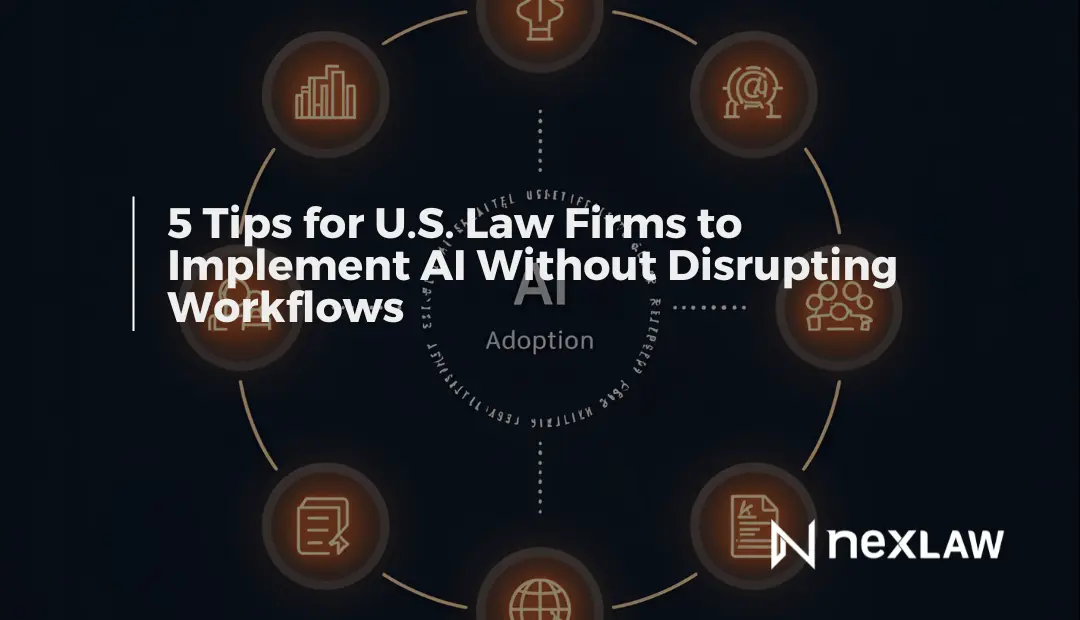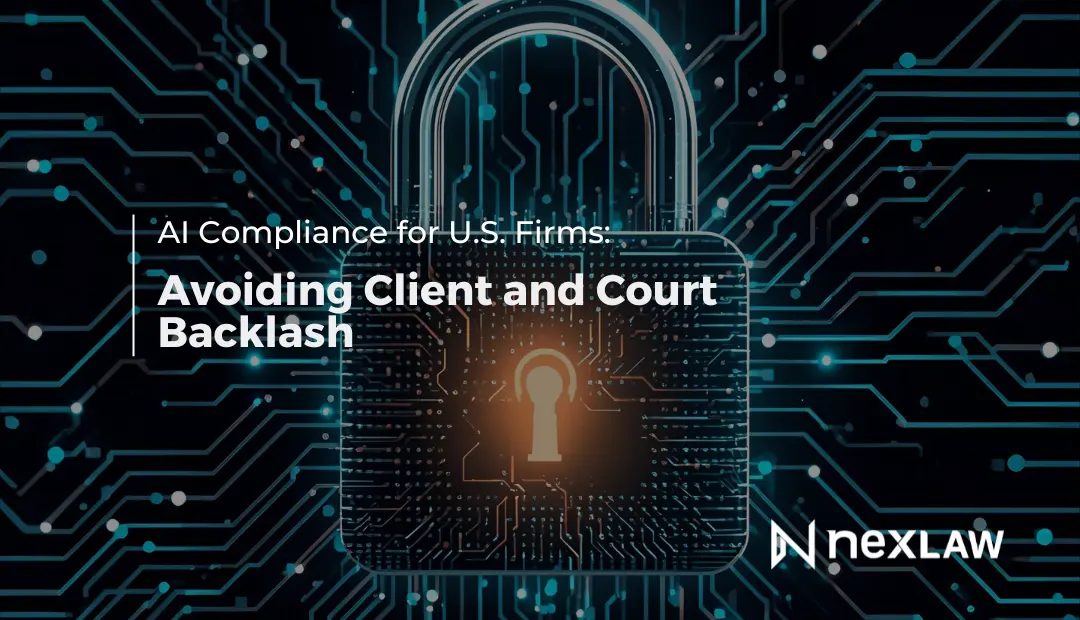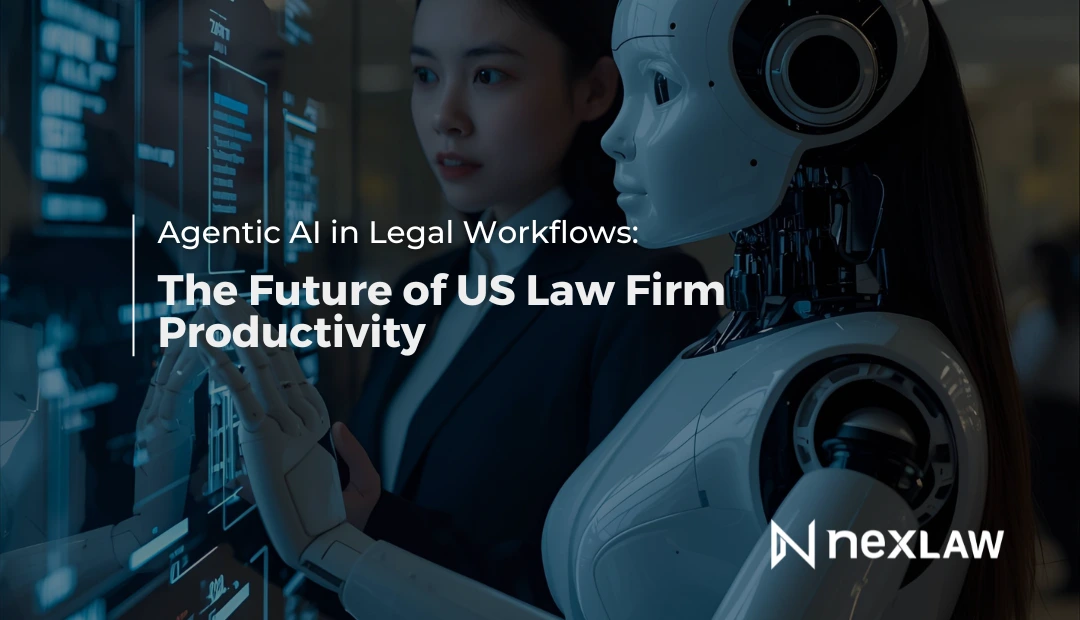5 Tips for U.S. Law Firms to Implement AI Without Disrupting Workflows
The AI Tipping Point for U.S. Law Firms
In 2025, artificial intelligence (AI) has transitioned from a futuristic concept to a practical tool in daily legal operations. From large AmLaw 100 firms in New York to boutique litigation practices in Chicago, U.S. law firms are increasingly exploring AI for research, drafting, and client communication.
Unlock Legal Insights Instantly!
AI promises efficiency, speed, and new insights, but its adoption also introduces challenges. If implemented poorly, AI can disrupt established workflows, overwhelm staff, or even create compliance risks. According to a 2025 Reuters Legal report, many U.S. firms considering AI cite workflow disruption not cost as their top concern.
The question is clear: how can law firms integrate AI effectively while minimizing disruption? Below are five practical strategies to help firms implement AI smoothly and responsibly.
1. Start with a Controlled Pilot Program
Jumping into a full-scale AI rollout can create resistance among attorneys and uneven adoption across departments. Instead, begin with a pilot program.
Best practices for a pilot:
- Choose one department or function, such as litigation support, contract review, or document summarization.
- Allow a small team to test AI tools on real cases.
- Collect feedback and measure performance metrics before expanding to other departments.
Why it works: A pilot reduces risk, provides actionable insights, and demonstrates tangible benefits to skeptical team members.
Example: A mid-sized litigation firm in New York piloted AI-assisted deposition summaries. Within three months, attorneys reported significant time savings and improved workflow confidence, paving the way for broader adoption.
Starting small also makes it easier to adapt the technology to your firm’s unique culture, client needs, and regulatory requirements.
2. Train Attorneys and Support Staff
Even the most advanced AI tools are only effective if staff understand how to use them properly. Training is essential for adoption and maximizing efficiency.
Key training strategies:
- Conduct hands-on workshops using real case files.
- Tailor training for specific roles: litigators learn AI drafting features, while paralegals focus on document management and research.
- Identify AI champions within the firm to mentor peers.
Industry insight: Law firms that invest in structured AI training report higher adoption rates and smoother integration, as staff feel confident in using the technology rather than hesitant or resistant.
Training also ensures ethical and compliant AI use. Staff must understand how to verify AI outputs and maintain professional responsibility, particularly regarding confidential client data.
3. Automate Repetitive, Low-Risk Tasks First
AI is best applied to routine, time-consuming processes, not complex legal judgment or strategy. By starting with low-risk tasks, firms can see immediate efficiency gains without compromising quality.
Ideal tasks for initial AI implementation:
- Summarizing depositions, hearings, or discovery documents.
- Drafting first-pass motions, pleadings, or contract templates.
- Organizing e-discovery documents by relevance.
- Extracting key clauses or terms from lengthy contracts.
Why it works: Automating repetitive work frees attorneys to focus on high-value tasks, reduces human error, and demonstrates early ROI from AI adoption.
Data-backed example: Studies from the American Bar Association and legal technology reports indicate that AI can reduce contract review time by more than 50% and lower document processing costs in U.S. firms.
4. Maintain Human Oversight for Quality and Compliance
Concerns about AI producing errors, hallucinations, or non-compliant outputs are valid. Legal professionals remain accountable for all filings and client work, meaning human oversight is essential.
Best practices for oversight:
- Require attorneys to review and approve all AI outputs before submission.
- Develop internal AI-use policies aligned with ABA Model Rules regarding competence, confidentiality, and diligence.
- Use AI as an assistant, not a replacement for professional judgment.
Professional insight: Ethics advisors emphasize that integrating AI without oversight can expose attorneys to malpractice risk. Proper review protocols safeguard quality, maintain client trust, and ensure ethical compliance.
5. Monitor Performance and Refine Continuously
AI implementation is not a one-time project. To maximize efficiency and adoption, firms must monitor results and adjust processes over time.
Key performance indicators (KPIs) to track:
- Average time saved per attorney per week.
- Accuracy and error rates compared to human-only work.
- Attorney satisfaction and adoption metrics.
- Client feedback on speed, clarity, and service quality.
Example: A California litigation firm tracked AI-assisted motion drafting and found significant reductions in prep time. By analyzing KPIs, the firm optimized its workflow, justified investment decisions, and planned for gradual expansion of AI use.
Continuous monitoring ensures that AI integration remains aligned with firm goals, client expectations, and regulatory standards.
Conclusion: Implementing AI Without Disruption
AI is transforming U.S. law firms, but disruption is not inevitable. By following these five strategies, starting small with a pilot, training staff, automating low-risk tasks, maintaining oversight, and tracking performance, firms can adopt AI smoothly, responsibly, and profitably.
The key is thoughtful implementation: AI should enhance human expertise, improve workflows, and elevate client service without introducing risk or confusion. Firms that embrace AI with structure and oversight position themselves to save time, reduce errors, and deliver better outcomes for clients.
Lawyers who embrace AI today are shaping the legal profession of tomorrow. Whether you’re part of a litigation team, a solo attorney, or a paralegal eager to expand your role, NexLaw makes it possible.
NexLaw is designed to help paralegals and attorneys solo or from small and mid-size prepare cases more efficiently, with greater accuracy and strategic insight.
Book a Guided Demo — See how NexLaw fits seamlessly into your practice and transforms your workflows.
Start a Free 3-Day Trial — Explore NexLaw risk-free and experience firsthand how AI can enhance efficiency, accuracy, and client satisfaction.
*t&c applied | visit our website for more details
With NexLaw, the future of litigation is here - AI-powered, accurate, and accessible






